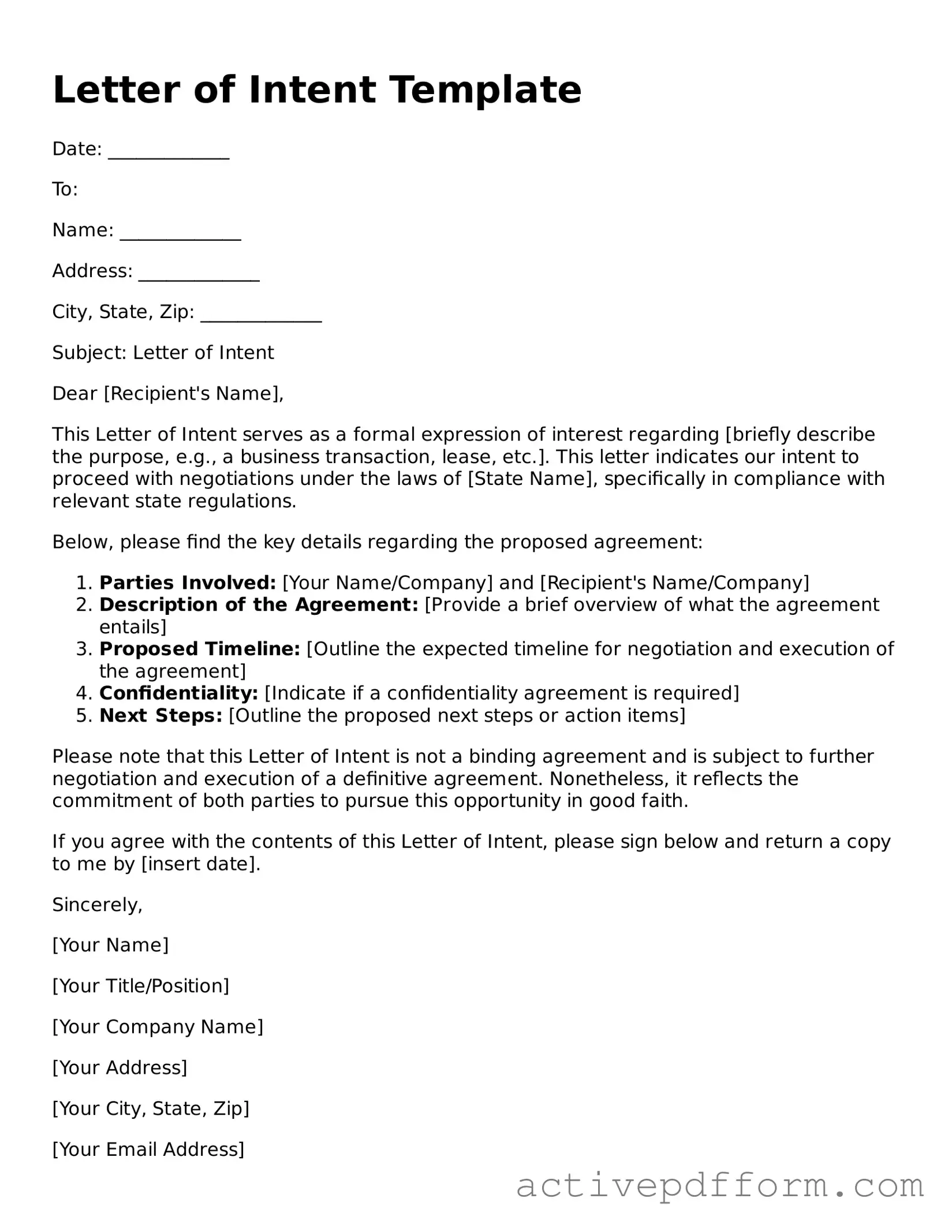What is a Letter of Intent (LOI)?
A Letter of Intent is a document that outlines the preliminary agreement between two or more parties. It expresses the intention to enter into a formal contract or agreement in the future. An LOI can cover various topics, such as business transactions, partnerships, or real estate deals.
Why do I need a Letter of Intent?
An LOI serves as a roadmap for negotiations. It helps clarify the key terms and conditions before drafting a formal contract. By outlining the main points, it can save time and reduce misunderstandings later on.
Is a Letter of Intent legally binding?
Generally, a Letter of Intent is not legally binding. However, some sections may be binding if explicitly stated. It’s important to clarify which parts are enforceable and which are not, so both parties understand their commitments.
What should be included in a Letter of Intent?
A typical LOI should include the purpose of the agreement, key terms, timelines, and any conditions that must be met. It may also outline confidentiality agreements and the next steps in the negotiation process.
How long does it take to draft a Letter of Intent?
The time to draft a Letter of Intent can vary. It might take a few hours to a couple of days, depending on the complexity of the agreement and the number of parties involved. Clear communication can speed up the process.
Can I modify a Letter of Intent after it is signed?
Yes, a Letter of Intent can be modified after it is signed. Both parties need to agree on the changes, and it’s best to document any modifications in writing to avoid confusion later.
Who typically signs a Letter of Intent?
Usually, the individuals who have the authority to bind their respective organizations sign the LOI. This could be executives, managers, or other authorized representatives. It’s important that the signers understand the implications of the document.
What happens after a Letter of Intent is signed?
After signing the LOI, both parties typically move forward with negotiations to finalize the formal agreement. The LOI can guide discussions and help ensure that both sides are aligned on key points.
Can a Letter of Intent be used in any industry?
Yes, a Letter of Intent can be used in various industries, including real estate, business acquisitions, and partnerships. Its flexibility makes it a useful tool for many types of agreements.
